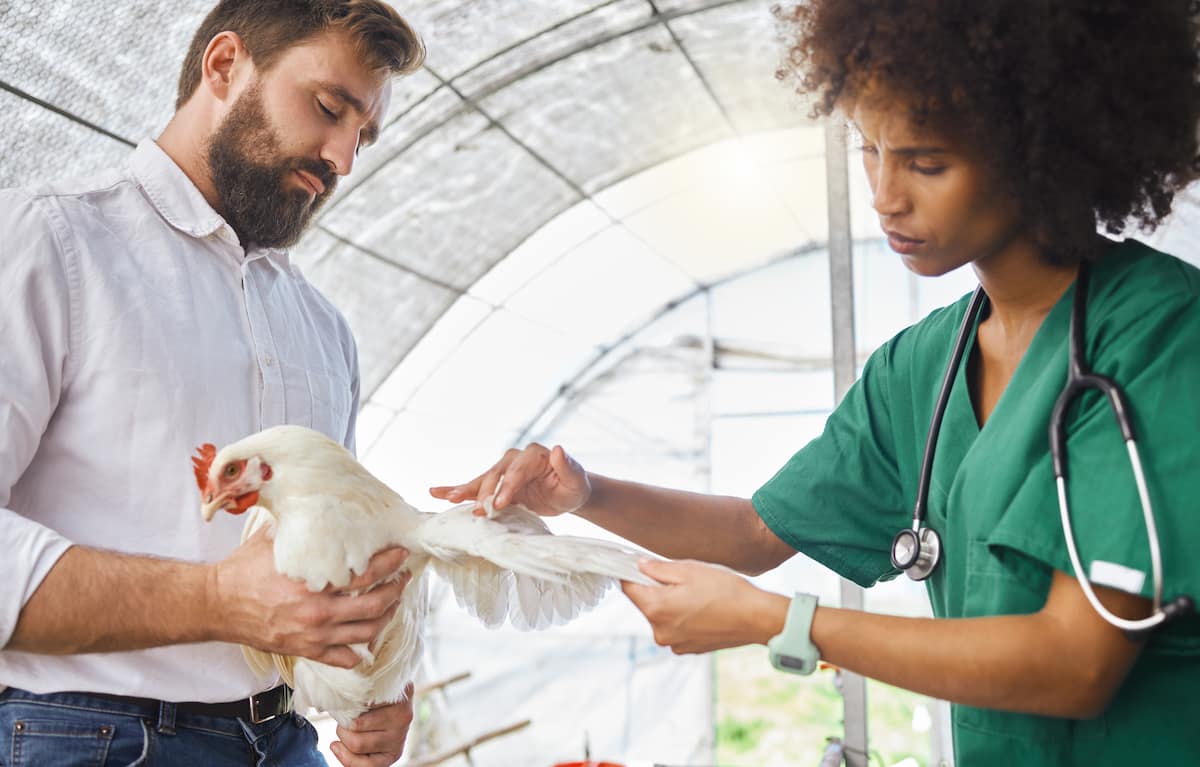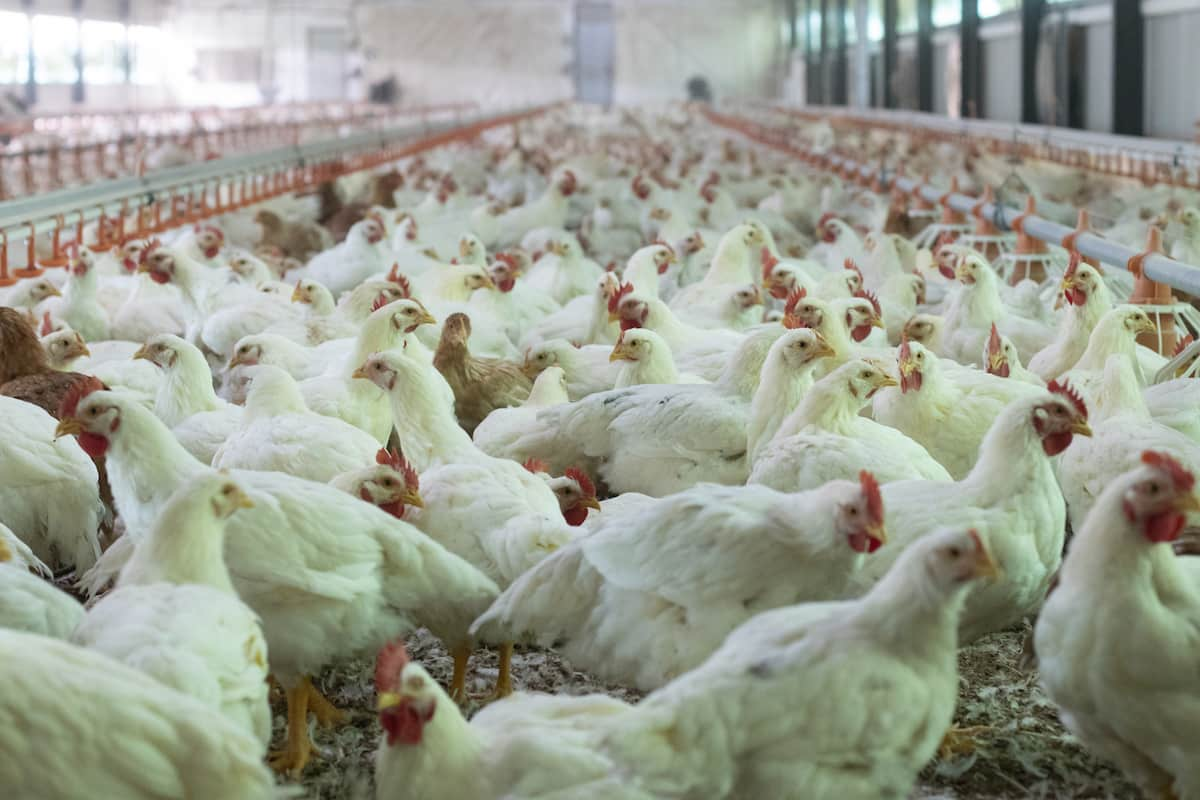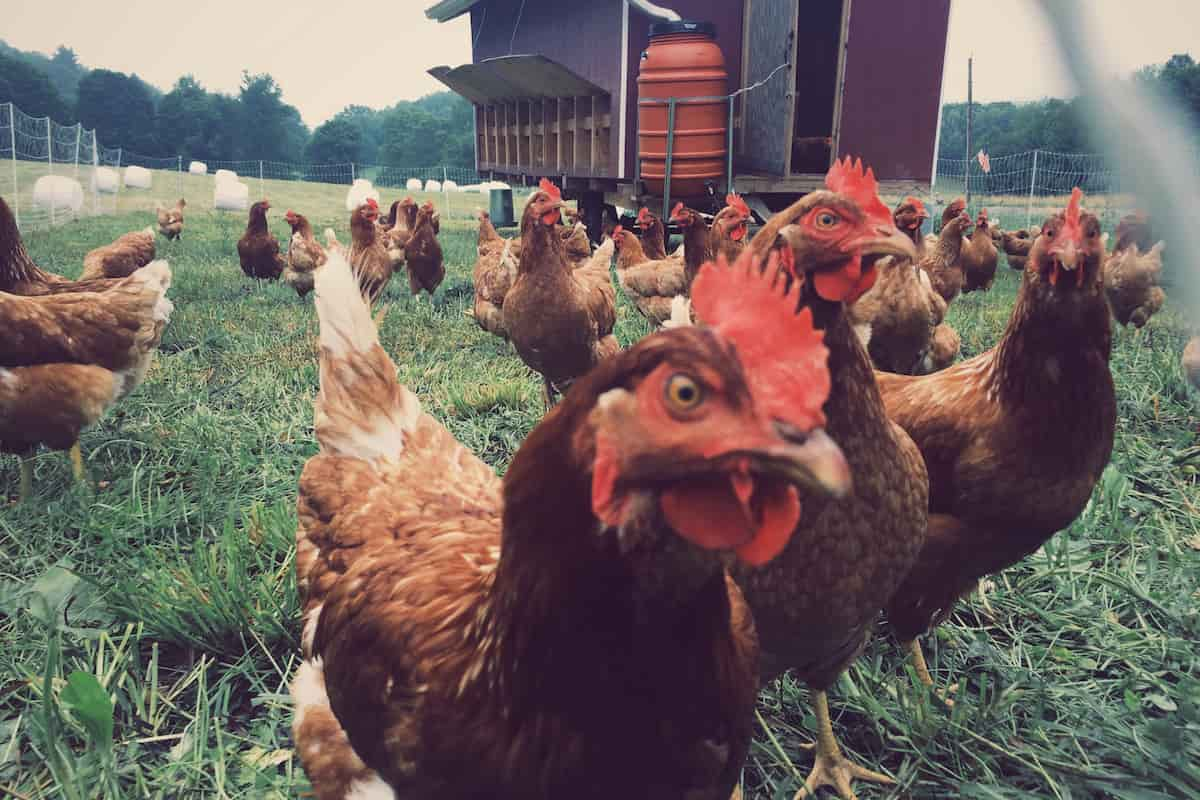Infectious coryza is a specific bacterial infection caused by Avibacterium paragallinarum that affects poultry, including chickens. It is characterized by respiratory symptoms such as nasal discharge, sneezing, and swelling around the eyes and face. The disease can cause poor growth in young birds and a significant decrease in egg-laying in mature birds.

It is commonly observed during a flock’s peak egg-laying phase and can occur following stressful events like relocation. The bacteria that cause infectious coryza is prevalent in certain regions of the country but can appear in any area where poultry is raised.
Infectious Coryza Management in Chicken
Causes of Infectious Coryza Disease
Infectious coryza is caused by Avibacterium paragallinarum (formerly Haemophilus paragallinarum). The disease is more severe in older birds and can be transmitted through contaminated drinking water or airborne means over a short distance. Direct contact can also lead to lateral transmission of the disease.
Intercurrent infections with microorganisms such as infectious bronchitis virus, Mycoplasma gallisepticum, Escherichia coli, or Pasteurella spp., as well as unfavorable environmental conditions, act as the primary source of the disease in clinically affected and carrier birds. These factors can aggravate and prolong chronic respiratory disease.
Disease Cycle of Infectious Coryza
The disease cycle of infectious coryza involves carriers or chronically ill birds serving as the reservoir of infection for the causative bacteria, Avibacterium paragallinarum. Chickens of all ages are susceptible, with older birds being more susceptible. The incubation period is typically 1-3 days, and the disease duration is 2-3 weeks, which may be longer in the presence of concurrent diseases such as mycoplasmosis. This disease’s transmission occurs through direct contact, airborne droplets, and contamination of drinking water. Eggs do not transmit the disease.
Symptoms of Infectious Coryza Disease
- Infectious coryza is characterized by rapid spread, high morbidity, and low mortality in flocks on deep litter management. The disease primarily affects chickens, and the first typical symptoms include sneezing, mucous-like discharge from the nose and eyes, and swelling on the face (facial edema).
- In severe cases, conjunctivitis with closed eyes, swollen wattles, and difficulty breathing can occur. Feed and water consumption is usually decreased, leading to a drop in egg production.
- Catarrhal to fibrino-purulent inflammation of the nasal passages, infraorbital sinus, and conjunctivae is typical of gross lesions.
- The sinus exudates may become consolidated and yellowish as the disease progresses or other pathogens become involved. Face and subcutaneous wattle edema are prominent.
- The upper trachea may be involved, but only in chronically complicated cases are the lungs and air sacs affected. Lethargy, depression, and stunted growth are other symptoms of infectious coryza.
In case you missed it: Newcastle/Ranikhet Disease Management in Chicken: Symptoms, Treatment, Diagnosis, and Prevention

Diagnosis of Infectious Coryza in Chicken
- The diagnosis of infectious coryza in chickens can be made by isolating a gram-negative, catalase-negative organism from infected chickens. Bacterial culture and PCR assay are commonly used methods for diagnosis.
- PCR testing provides more accurate results than bacterial culture, and a real-time version of the PCR assay is available.
- Other diagnostic methods include producing typical signs after inoculating susceptible chickens with nasal exudate from infected chickens.
Treatment and Control of Infectious Coryza Disease
- Avibacterium paragallinarum causes infectious coryza, a respiratory disease in chickens.
- The effective way to control the disease is through prevention. Good management practices such as all-in/all-out animal flow and vaccination are important measures to prevent and control infectious coryza.
- Bacterins/vaccines are available to aid in disease prevention and control, and they should contain the serovars found in the target population.
- Individual farm vaccinations should be completed four weeks before infectious coryza outbreaks typically occur.
- Antibodies detected by the hemagglutination-inhibition test after bacterin administration, on the other hand, do not always correlate with protective immunity. Controlled exposure to live organisms has also generated protective immunity in endemic layers.
- In case of an outbreak, prompt antimicrobial treatment with supportive care of infected birds is important to aid recovery.
- Immediate medication administration via drinking water is recommended until the medicated feed is available.
- Erythromycin and oxytetracycline are usually effective, but several newer-generation antimicrobials (e.g., fluoroquinolones, macrolides) can also be used.
- Various sulfonamides, including trimethoprim-sulfamethoxazole, and other drug combinations have been successful in treatment.
- However, antimicrobial use in chickens is subject to national regulations that vary from country to country, and use and efficacy must be reviewed in light of relevant laws.
Preventive Measures of Infectious Coryza Disease in Chickens
- Hygiene and sanitation: Maintaining cleanliness in the farm and equipment can help prevent the spread of infectious coryza.
- Strict biosecurity: Implementing strict biosecurity measures can prevent the entry of the causative organism, H. paragallinarum, into the farm. This includes measures such as controlling access to the farm, disinfecting vehicles and equipment, and using footbaths.
- Procurement of birds from disease-free sources: Birds should only be sourced from disease-free flocks to prevent the introduction of infectious coryza into the farm.
- Removal and culling of recovered birds: Recovered birds can still carry the causative organism and should be removed and culled from the flock to prevent the spread of infection.
- All-in-all-out rearing system: This system involves raising birds in groups and removing all birds from the house at the end of the production cycle. This can help eradicate the disease.
- Vaccination: Vaccination using inactivated whole culture of organisms containing an adjuvant can protect chickens against infectious coryza. In endemic areas, two doses of vaccine are recommended, given subcutaneously at 16 and 20 weeks of age.
- Cleaning, disinfection, and resting of the building: After an outbreak, the building should be cleaned, disinfected, and rested for at least one week before restocking with new birds.
- Use of disease-free birds: Only day-old chickens or older birds are known to be free from H. paragallinarum should be used for restocking.
In case you missed it: Fowl Cholera Disease Management in Chicken: Symptoms, Treatment, Diagnosis and Prevention of Disease

Conclusion
Infectious coryza is a significant respiratory disease in chickens caused by Avibacterium paragallinarum. Diagnosis of the disease can be made by bacterial culture or PCR assay. Prevention is key to controlling the spread of the disease, and it requires a combination of measures such as all-in/all-out management, sound biosecurity, and appropriate vaccination.
All-in/all-out management and good biosecurity practices such as cleaning and disinfecting facilities, proper handling of birds, and sourcing birds from disease-free sources can help prevent the spread of the disease. Vaccination using inactivated whole cultures of organisms containing an adjuvant can also protect birds against the disease. By implementing these measures, farmers can help control and prevent the spread of infectious coryza in their flocks, ensuring the health and productivity of their chickens.
- Beneficial Insects in Pest Management
- Natural Solutions for Pest Control in Flower Gardens
- Types of Fungicides Used in Agriculture
- Common Issues in the Fruit Development Stage of Pomegranate Farming
- Fruit Development Issues in Papaya: Easy Solutions and Treatment
- Soil-Borne Diseases and How to Protect Your Plants
- Practices to Prevent Disease Spread in the Garden
- From Wilted to Thriving: How to Treat Root Rot Naturally in Houseplants
- Natural Remedies to Cure Brown Spots on Fig Tree Leaves